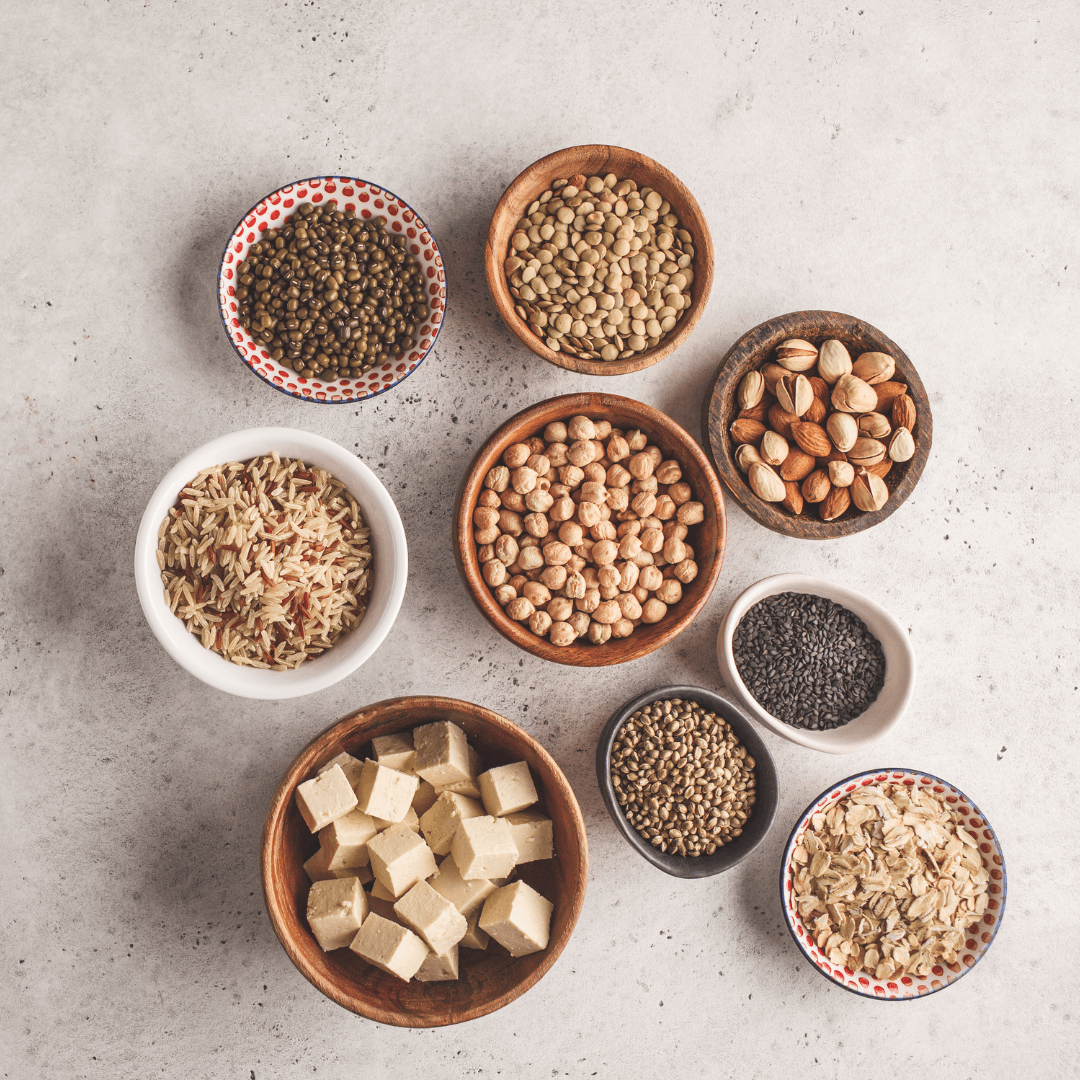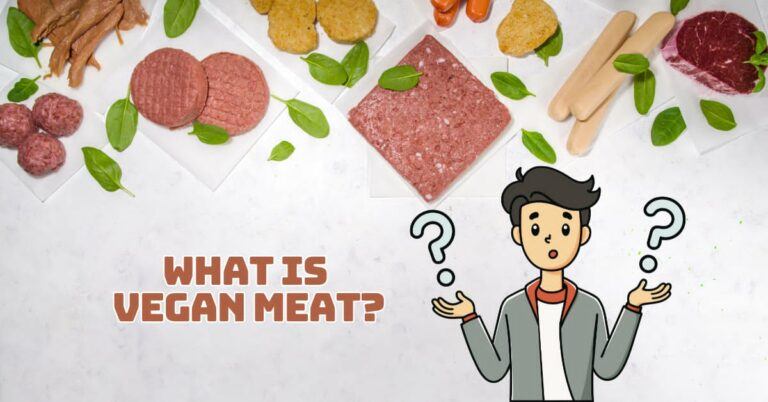What Is Vegan Chicken Made Of
What Is Vegan Chicken Made Of?
Vegan chicken has emerged as a popular and delicious alternative for those following a plant-based diet or seeking to reduce their consumption of animal products.
As more people embrace a vegan lifestyle, food manufacturers and chefs have created innovative and mouthwatering vegan options that closely mimic traditional chicken's taste, texture, and appearance.
However, instead of animal-derived ingredients, vegan chicken is crafted from various plant-based proteins and carefully combined with other ingredients to achieve a satisfying and cruelty-free culinary experience.
This article will explore the fascinating world of vegan chicken and delve into the different plant-based ingredients used to recreate this familiar and beloved dish.
From soy-based protein to wheat gluten and beyond, these plant-powered alternatives showcase the versatility and creativity of plant-based cooking while offering a compassionate and sustainable choice for consumers.
Benefits Of Vegan Chicken
Vegan chicken provides many benefits, combining the goodness of plant-based ingredients with traditional chicken's familiar flavours and textures.
From promoting health and sustainability to embracing compassion and inclusivity, this meat alternative has become popular for vegans and non-vegans. Here are the benefits of vegan chicken:
1. Health Benefits
Vegan chicken is typically lower in saturated fat and cholesterol than its animal-based counterpart.
It offers a healthier alternative for individuals looking to reduce their intake of animal products, promote heart health, and lower the risk of certain diseases.
2. Plant-Based Protein
Vegan chicken is a valuable source of plant-based protein derived from ingredients like soy, wheat, or peas.
These protein sources are essential for muscle building, repair, and overall bodily functions, making vegan chicken a nutritious option for vegans and those seeking meat alternatives.
3. Environmentally Friendly
Producing vegan chicken has a significantly lower environmental impact than raising traditional livestock.
Plant-based ingredients require fewer natural resources, water, and land, reducing greenhouse gas emissions and supporting sustainable food systems.
4. Cruelty-Free
As a plant-based option, vegan chicken is free from animal cruelty and contributes to ethical eating practices.
It allows individuals to enjoy chicken-like dishes without supporting harming and exploiting animals.
5. Allergen-Friendly
Vegan chicken is suitable for individuals with common food allergies, such as lactose intolerance or egg allergies. It eliminates the risk of allergic reactions associated with conventional chicken dishes.
6. Versatility
Vegan chicken comes in various forms, from pre-made products like nuggets and patties to DIY recipes customized to individual tastes.
Its versatility allows various culinary creations, catering to different cuisines and cooking styles.
7. Taste And Texture
Advancements in vegan food technology and cooking techniques have resulted in more authentic and flavorful vegan chicken products.
Many options mimic the taste and texture of traditional chicken, providing a satisfying dining experience for vegans and non-vegans.
8. Global Impact
Choosing vegan over animal-based chicken reduces the demand for animal agriculture, which has significant implications for animal welfare, the environment, and public health.
9. Innovative Ingredients
The production of vegan chicken has led to the exploration of innovative plant-based ingredients and cooking methods, driving the development of a more sustainable and compassionate food industry.
10. Inclusivity
Offering vegan chicken as a delicious and familiar alternative can encourage non-vegans to incorporate more plant-based options.
This inclusivity promotes a more diverse and sustainable food culture that caters to various dietary preferences and ethical beliefs.
Understanding Vegan Chicken
Vegan chicken is a plant-based alternative to traditional chicken, entirely free from animal products.
It uses various plant-based ingredients to replicate real chicken's taste, texture, and appearance. Some common ingredients used in vegan chicken include:

1. Plant-Based Protein Sources
Plant-based protein sources play a crucial role in creating the texture and taste of vegan chicken. Soy protein is one of the most commonly used ingredients derived from soybeans.
It provides a substantial amount of protein and has a fibrous texture that mimics the muscle fibres in traditional chicken.
Wheat gluten, also known as seitan, is made from wheat protein and offers a chewy and meat-like texture, making it a popular choice for vegan chicken cutlets and strips.
Pea protein, derived from yellow peas, is another essential component in vegan chicken products, providing a smooth and creamy texture that complements various dishes.
These plant-based proteins offer the necessary amino acids for a well-balanced diet and contribute to the savoury and umami flavours characteristic of chicken.
Additionally, other plant-based ingredients, such as chickpeas, lentils, and mushrooms, are often incorporated to enhance the nutritional profile and add depth to the taste of vegan chicken.
Combining these plant-based proteins and ingredients allows for a versatile range of vegan chicken products that cater to different tastes and dietary preferences while offering a sustainable and ethical alternative to animal-derived proteins.

2. Soy Protein Isolates And TVP
Soy protein isolates and textured vegetable protein (TVP) are two key ingredients that play a fundamental role in creating the meat-like texture of many vegan chicken products.
Soy protein isolates are derived from defatted soybean flakes, where the protein content is concentrated through an extraction process.
These isolates are then transformed into fine powder that can be rehydrated and moulded into chicken-like shapes.
Soy protein isolates possess an impressive ability to bind and hold moisture, which is crucial for replicating the juiciness of real chicken.
On the other hand, TVP is made from defatted soy flour that is texturized through extrusion.
During extrusion, the soy flour is exposed to heat and pressure, resulting in a fibrous and chewy texture resembling the consistency of cooked chicken.
TVP readily absorbs flavours and seasonings, making it an ideal canvas for creating a wide range of vegan chicken dishes with authentic taste profiles.
These versatile soy-based ingredients provide a blank slate for chefs and food manufacturers to experiment with flavours, textures, and forms, allowing them to craft vegan chicken products that closely resemble traditional chicken in taste and appearance.
As a result, soy protein isolates and TVP have become indispensable components in the thriving world of plant-based cuisine, offering a sustainable and compassionate alternative for those seeking to enjoy the familiar taste and texture of chicken without using animal products.

3. Seitan
Seitan, also called wheat gluten, is a protein-rich and versatile plant-based ingredient that significantly creates vegan chicken alternatives.
It is made from wheat protein by washing wheat flour dough with water until the starches are rinsed away, leaving behind a sticky and elastic gluten mass.
This gluten mass is then kneaded and shaped into various forms, such as cutlets, tenders, or strips, resembling the appearance of chicken.
Seitan's unique texture results from its fibrous and chewy consistency, which resembles cooked meat.
It is an excellent blank canvas for absorbing flavours, making it highly receptive to marinades and seasonings that infuse it with a delicious taste reminiscent of chicken.
Chefs and home cooks can experiment with different spices, herbs, and cooking methods to achieve a wide range of chicken-like flavours with seitan.
Furthermore, its high protein content makes it a valuable source of plant-based protein in vegan diets.
As a result, seitan has become a beloved ingredient in the plant-based culinary world, delighting vegans and non-vegans alike with its ability to provide a satisfying and meaty experience without the need for animal products.

4. Jackfruit
Jackfruit has emerged as a trendy ingredient in vegan cooking, particularly for its ability to imitate the texture of shredded chicken.
Native to Southeast Asia, this large tropical fruit possesses a naturally fibrous and meaty consistency when ripe, making it an excellent plant-based substitute for shredded chicken.
Once cooked or marinated, the strands of jackfruit can be easily pulled apart, resembling the appearance of shredded chicken, making it an ideal ingredient for tacos, sandwiches, curries, and more.
One of the most attractive qualities of jackfruit is its adaptability to various flavours and seasonings, allowing it to absorb a wide array of tastes and aromas.
It can be seasoned with spices and sauces to recreate the flavours found in traditional chicken dishes, making it a versatile choice for vegans seeking familiar tastes.
Additionally, jackfruit is packed with essential nutrients such as dietary fiber, vitamin C, potassium, and antioxidants, making it a satisfying chicken alternative and a nutritious addition to plant-based diets.
As its popularity continues to soar, jackfruit has become a staple in vegan kitchens, adding a delicious and savoury component to a wide range of recipes while contributing to the overall culinary creativity and innovation in plant-based cuisine.

5. Tofu And Chickpeas
Tofu and chickpeas are two versatile ingredients commonly used in vegan chicken recipes, each offering distinctive characteristics that contribute to creating delectable plant-based dishes.
Tofu, made from coagulated soy milk, is renowned for its ability to absorb flavours and take on various textures depending on its preparation.
In vegan chicken recipes, firm or extra-firm tofu is often used to mimic the density and chewiness of chicken.
By marinating tofu in savoury sauces or spices and grilling, baking, or pan-frying, cooks can achieve a similar taste and texture to traditional chicken.
On the other hand, chickpeas have a soft and slightly crumbly texture reminiscent of shredded chicken when mashed or blended.
They can be seasoned with aromatic herbs and spices and mixed with plant-based mayonnaise or other binders to create chicken-like salad fillings or patties for sandwiches and burgers.
The versatility of both tofu and chickpeas allows them to be used interchangeably or combined with other vegan ingredients to recreate classic chicken dishes, such as stir-fries, nuggets, or even “chicken” pot pies.
Rich in protein, fiber, and essential nutrients, tofu and chickpeas provide a satisfying meat-like texture and contribute to the nutritional value of vegan chicken dishes.
As these plant-based alternatives continue to gain popularity, tofu and chickpea-based vegan chicken dishes offer a cruelty-free and eco-friendly way to enjoy the comforting tastes and textures of chicken-inspired meals.

6. Flavourings And Seasonings
Flavourings and seasonings are pivotal in elevating the taste of vegan chicken products, helping replicate traditional chicken dishes' authentic and savoury flavours.
With various herbs, spices, and plant-based seasonings, chefs and food manufacturers can craft delightful vegan chicken alternatives that appeal to diverse palates.
Common seasonings used in vegan chicken products include garlic powder, onion powder, smoked paprika, and nutritional yeast, contributing to the umami-rich profile reminiscent of chicken.
Additionally, aromatic herbs like rosemary, thyme, and sage infuse a comforting and familiar essence.
Soy sauce or tamari adds depth and enhances the savoury notes, while liquid smoke can lend a subtle smokiness akin to grilled chicken.
By combining these elements, vegan chicken products gain complexity and depth, transforming simple plant-based ingredients into mouthwatering delights.
The strategic use of seasonings allows chefs to adapt the taste profile to create various styles of vegan chicken, such as barbecue, buffalo, or teriyaki, ensuring a diverse range of options for consumers.
Moreover, experimenting with different combinations of herbs and spices opens up possibilities, allowing culinary creativity to flourish in vegan cooking.
Through careful selection and application of seasonings, vegan chicken products transcend beyond being just meat substitutes and become delectable dishes in their own right, tempting both vegans and non-vegans alike with their authentic flavours and plant-powered goodness.

7. Texturization Techniques
Texturization techniques are crucial in transforming plant-based ingredients into vegan chicken with a texture similar to traditional poultry.
One common method is marinating, where the main protein source, such as tofu, tempeh, or jackfruit, is soaked in a flavorful liquid mixture.
The marinade imparts taste and infuses the protein with moisture, enhancing tenderness and juiciness.
Additionally, marinating can help break down fibrous structures, making the final product more palatable.
Pressing is another essential technique, especially for tofu and tempeh. By removing excess water from these ingredients, a firmer texture is achieved, allowing for better absorption of marinades and preventing a soggy consistency during cooking.
Furthermore, pressing creates a denser texture akin to the mouthfeel of chicken. Various cooking methods also contribute to texturization.
For example, baking, grilling, or pan-frying can create a crispy exterior while retaining a tender interior, similar to chicken skin and meat texture.
Simmering or braising in a flavourful broth can add moisture and help the protein absorb additional flavours, resulting in a succulent and well-seasoned product.
Combining these texturization techniques allows for a diverse range of vegan chicken products, from tender and juicy cutlets to shredded varieties that resemble pulled chicken.
The art of texturization in vegan cooking is a delicate balance, ensuring that the resulting dishes look like chicken and have the desired mouthfeel and taste to provide a satisfying dining experience for vegans and those exploring plant-based options.

8. Coconut Milk
Coconut milk, derived from the flesh of mature coconuts, is a luscious and versatile ingredient frequently employed to enhance the flavours and textures of certain vegan chicken dishes.
Its velvety consistency lends a luxurious creaminess to recipes, making it an ideal addition to curries, stews, and coconut-based sauces.
The richness of coconut milk complements the meaty textures of plant-based chicken alternatives, creating a satisfying and hearty meal reminiscent of traditional chicken dishes.
Moreover, coconut milk adds a delightful tropical twist, infusing the meal with a subtle coconut aroma tantalizing the taste buds.
As a dairy-free and vegan-friendly alternative to traditional dairy products, coconut milk brings depth and a hint of sweetness to the dish.
Its natural fats also contribute to the mouthfeel and satiety of the meal, making it a wholesome choice for those seeking nourishing and satisfying plant-based options.
Whether creating a sumptuous vegan chicken curry or a creamy coconut-infused stew, coconut milk is a delightful ingredient that elevates the overall dining experience.

9. Flaxseeds And Chia Seeds
Flaxseeds and chia seeds are nutritional powerhouses that are excellent binding agents in vegan chicken recipes.
They form a gel-like substance when mixed with water due to their highly soluble fiber content.
This gel helps bind the ingredients, providing structure and cohesion to vegan chicken patties and other plant-based meat alternatives.
Flaxseeds are rich in omega-3 fatty acids, lignans, and fiber, offering numerous health benefits, including heart health support and anti-inflammatory properties.
Chia seeds, on the other hand, are packed with essential nutrients like protein, omega-3s, calcium, and antioxidants.
Beyond their binding capabilities, these seeds contribute to the nutritional profile of the final dish, adding an extra boost of nutrients and plant-based goodness.
As vegan chicken patties are often made with plant proteins and other ingredients like vegetables and seasonings, flaxseeds and chia seeds play a crucial role in keeping all these components together during cooking.
Whether used in homemade recipes or store-bought vegan chicken products, these tiny seeds are invaluable in creating delicious, wholesome, and well-structured plant-based meals.

10. Cornstarch Or Arrowroot Powder
Cornstarch and arrowroot powder are essential for achieving a crispy texture for vegan chicken dishes.
When coating the vegan chicken pieces before frying or baking, these starches create a light, delicate outer layer that crisps up beautifully during cooking.
Both cornstarch and arrowroot powder act as thickeners and absorb moisture from the surface of the vegan chicken, helping to seal in flavours and retain juiciness while forming a crisp crust.
Cornstarch is derived from corn kernels and is a common pantry staple known for its neutral taste and smooth texture.
On the other hand, arrowroot powder comes from the rhizomes of the arrowroot plant and is a popular alternative for those seeking a grain-free option.
Using either starch allows the vegan chicken to develop a golden-brown, crunchy exterior, similar to traditional fried or breaded chicken.
These starches also contribute to the dish's overall mouthfeel and visual appeal, enhancing the eating experience for vegans and non-vegans.
Whether it's creating homemade vegan chicken nuggets, tenders, or fillets, the combination of cornstarch or arrowroot powder with other flavourful seasonings ensures that the result is a delightful, crispy, and satisfying plant-based alternative to fried chicken.
Conclusion
In conclusion, vegan chicken is a remarkable and innovative creation that offers a delicious and cruelty-free alternative to traditional poultry-based dishes.
Vegan chicken caters to the growing demand for sustainable and ethical food choices and offers numerous health benefits.
With lower saturated fat content, zero cholesterol, and abundant fiber and nutrients from plant-based sources, vegan chicken can contribute to a well-balanced and wholesome diet.
Additionally, the versatility of vegan chicken allows it to be used in various dishes, from sandwiches to wraps into curries and stir-fries, catering to diverse culinary preferences.
As the popularity of plant-based eating continues to rise, the development of vegan chicken exemplifies the culinary creativity and dedication to sustainability within the vegan food industry.
Whether you are a seasoned vegan or curious about exploring plant-based alternatives, trying out vegan chicken opens up a world of delectable and compassionate dining options that contribute to a healthier planet and a more compassionate society.
By embracing this cruelty-free innovation, we can savour the flavours and textures of chicken dishes while positively impacting animal welfare and the environment.
I trust you enjoyed reading the article about What Is Vegan Chicken Made Of? Please stay tuned. There are more blog posts to come very shortly.
JeannetteZ
>>>Want To Learn How To Create Delicious, Cruelty-Free, Healthy AND 100% Vegan Meals? Try These Awesome Vegan Cooking Courses With A Free 7-DAY MEMBERSHIP.<<<
Your Opinion Is Important To Me
Ideas? Thoughts? Questions? I would love to hear from you. Would you please leave me your questions, experience, and remarks about How Vegan Chicken Is Made in the comments section below? You can also reach me by email at Jeannette@LivingTheVeganLifestyle.org.
Disclosure
This post may contain affiliate links. I earn from qualifying purchases as an Amazon Associate and other affiliate programs. Please read my full disclosure.







